Photographic Insert

The first published image of Niagara Falls was an engraving based on Louis Hennepin’s account of seeing the Falls with La Salle in 1678. This one by Pieter vander Leyden appeared in a 1704 Dutch edition of Hennepin. Castellani Art Museum of Niagara University Collection. Generous donation from Dr. Charles Rand Penney, partially funded by the Castellani Purchase Fund, with additional funding from Mr. and Mrs. Thomas A. Lytle, 2006.
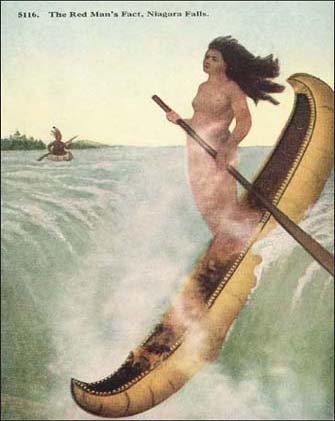
Lelawala takes the plunge: Though this card is from the early twentieth century, postcards showing the mythical “Maid of the Mist” continue to be a staple of Niagara souvenir stands. From the author’s collection.
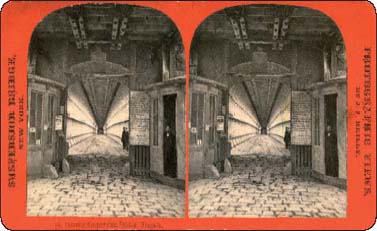
Looking across the Railway Suspension Bridge. Pedestrians and carriages—and fugitives—passed through the tunnel underneath while trains ran above. J. J. Reilly stereoview, courtesy of the Niagara Falls Public Library.
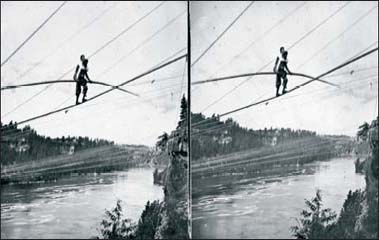
A nation transfixed by the drama of fugitive slaves couldn’t look away as Blondin carried his manager Henry Colcord across the tightrope. Courtesy of the Niagara Falls Public Library.
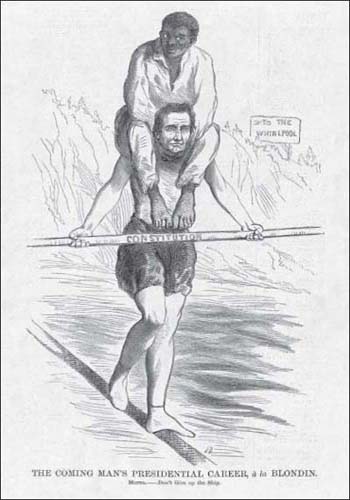
Lincoln goes out on a wire. The Harper’s cartoon, probably drawn by Jacob Dallas, compares the Republican party’s antislavery stand with Blondin’s crossing of the Niagara Gorge. Harper’s Magazine, August 25, 1860.
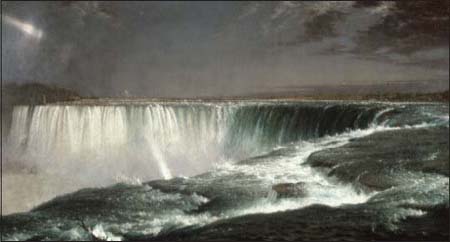
With Frederick Church’s iconic 1857 painting of Niagara, American landscape painting came of age. The Granger Collection, New York.
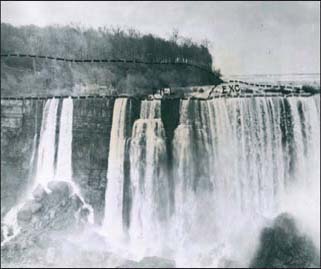
In the early 1960s, the Army Corps began remediations to the waterfall that would include filling in and landscaping the American end of the Horseshoe Falls, then excavating the riverbed to ensure an even curtain of waterfall at the brink. The Horseshoe Falls are now entirely in Canada. Courtesy of the Niagara Falls Public Library.

In 1969 the American Falls were literally turned off so the Army Corps of Engineers could perform tests and shore up the rockface. Courtesy of the Niagara Falls Public Library.
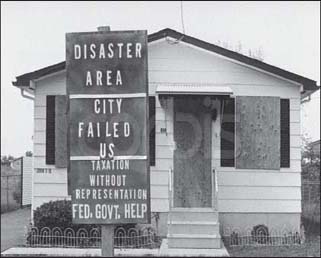
The price of cheap power was paid by the poor: one of many homes eventually bulldozed at Love Canal. © Bettmann/CORBIS.
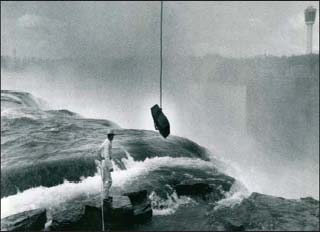
Perilous ground: even as the government resisted evacuating Love Canal, Terrapin Point was entirely rebuilt. Here, a worker puts the final rocks into the neat rock wall that hems in the Horseshoe Falls and keeps water from flowing over the artificial land of Terrapin Point. Photograph by Dennis Enser, The Buffalo News, May 25, 1983.
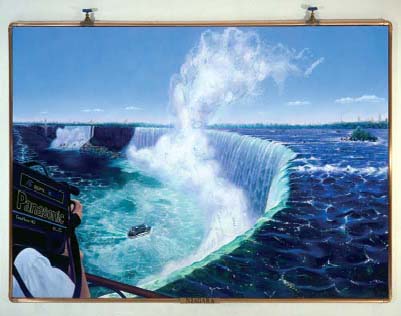
In Frank Moore’s revision of Frederick Church’s Niagara, the human can’t be painted out of the picture: the mist is laced with chemical compounds, the landscape is framed by plumbing pipe, and it’s all caught in the camera’s eager iris. Frank Moore, Niagara, 1994/95. Collection Albright-Knox Art Gallery. Courtesy of the Gesso Foundation and Sperone Westwater Gallery, New York.